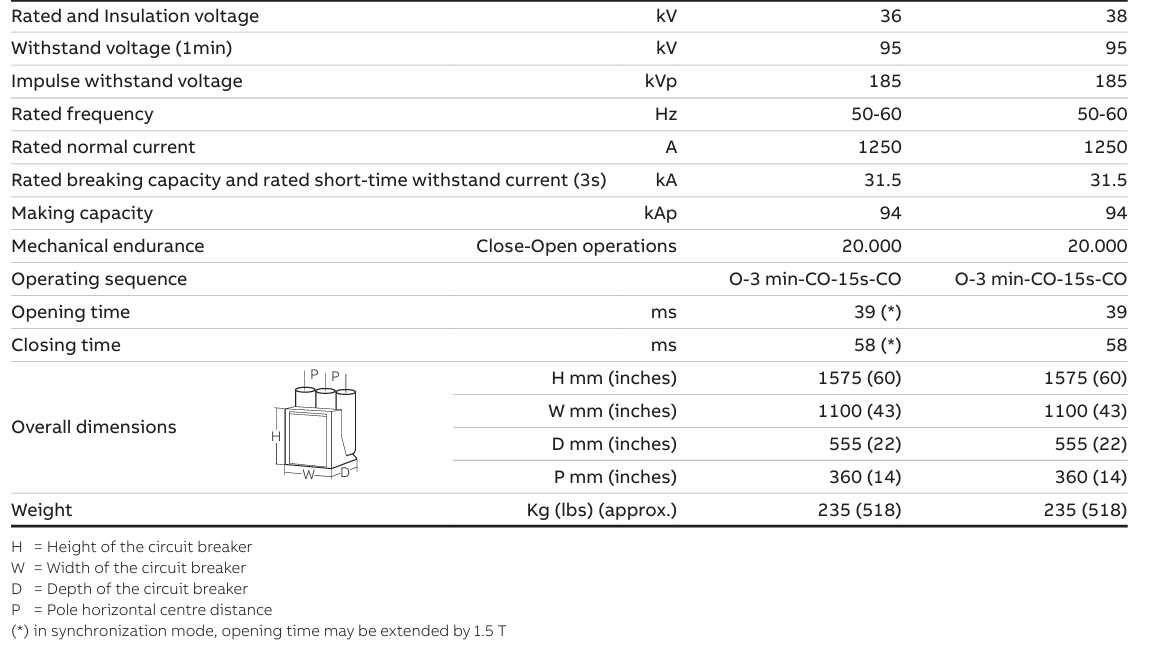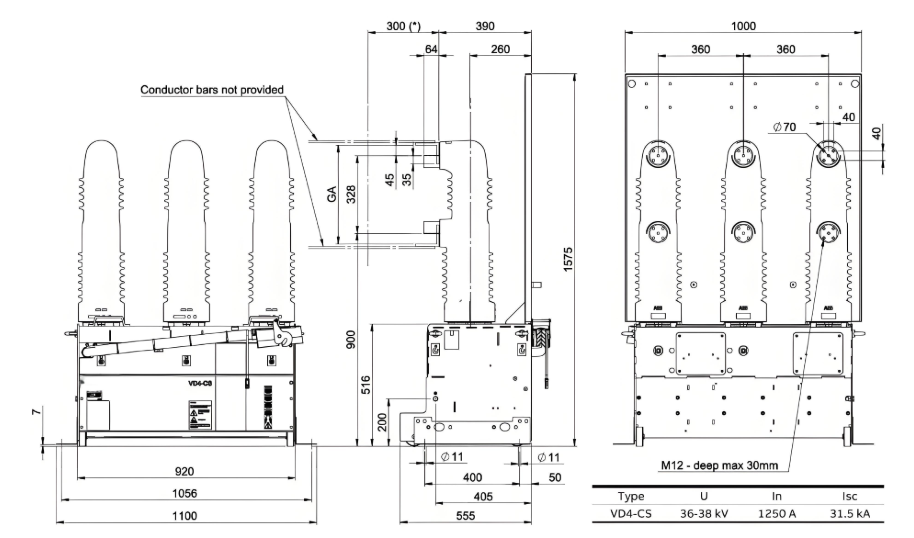36kV/38kV Indoor Vacuum Servo Motor Controlled Switching Circuit Breaker
discuss personally
Model
| Brand | ABB |
| Model NO. | 36kV/38kV Indoor Vacuum Servo Motor Controlled Switching Circuit Breaker |
| Rated voltage | 38kV |
| Rated normal current | 1250A |
| Rated frequency | 50/60Hz |
| Series | VD4-CS |
Description:
VD4-CS is the unique solution based on new vacuum interrupter technology and an innovative actuation systems up to 38kV, 1250A, 31.5kA and with superior noise-free performances, to support your business needs in reactive power compensation.Noise-free power quality by safe and reliable switching and protection of capacitor banks.
Key benefits:
Key features:
The CB comprises of:
Technical Characteristics:

Dimension drawing:







